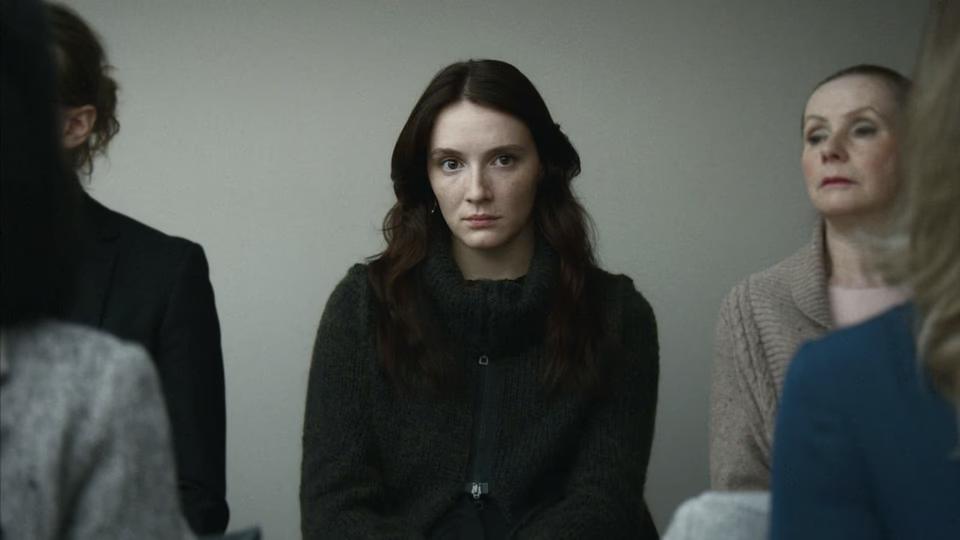Red Rooms

A somewhat disappointing trend amongst modern horror films sees them lifting plots or aesthetics from prior generations in service of tamer productions. Red Rooms falls into this category. It takes the basic plot and story of Taxi Driver and uses it to interrogate the current cultural fascination with the true crime genre, to disappointing results.
Set in Montreal, the plot concerns Kelly-Anne—played by Juliette Gariépy in a convincing performance—a young fashion model whose primary source of income comes from online poker. She opens the film waking up on the street, where she’s slept to secure a spot at the trial of a man accused of murdering three teenage girls for a “Red Room” dark-web site where members pay to watch snuff films.
Mirroring Travis Bickle’s nightly shifts through New York’s seedier districts in Taxi Driver, Kelly-Anne returns day after day to observe the trial. The ample media coverage attracts an array of onlookers, including some “fans” of the accused, one of whom, Clementine, bonds with Kelly-Anne. Clementine, a younger woman who substitutes for Taxi Driver’s Iris, hitchhiked to Montreal to attend the trial. She defends the accused at every turn while Kelly-Anne remains taciturn.
In the film’s most powerful scene, Kelly-Anne shows Clementine the murder footage. We see Clementine struggle to endure the grisly violence while Kelly-Anne stares on unfazed.
Unfortunately, the film flounders from here, building to an anti-climactic finale that sees Kelly-Anne break into a house, take some selfies, and deposit crucial evidence.
And there’s the rub. While the story shares a similar structure to Taxi Driver—a young person’s repeated exposure to society’s underbelly mirrors their mental decay—it lacks the prior film’s horrific yet cathartic finale. While one could argue Red Rooms writer-director Pascal Plante deliberately eschewed catharsis, he also eschews any punch. His Taxi Driver would see Travis Bickle photograph Sport murdering a woman, convince Iris to leave by showing her said pictures, then turn them over to the police. Plante misses the genius in Paul Schrader’s Taxi Driver script, namely how the finale makes the audience complicit—in rooting for Travis, we’ve reached his level. That’s horror.
Red Rooms plumbs no such depths. Instead, Plante adopts a clinical approach. His fetishization of the details—everything from Kelly-Anne’s choice of web browser to her use of Bitcoins—evokes David Fincher. His omission of any kind of inner monologue renders Kelly-Anne a cipher, a detached persona to represent our detached relationship to the various true crime stories that populate Netflix and podcasts—a relationship reinforced by her side-job as a model.
But Plante’s central thesis: that our obsession with true crime as represented by Kelly-Anne’s obsession with the trial risks driving us crazy, feels almost trite. After all, while Kelly-Anne certainly loses her mind, it’s a situation of her own making—one that results in no collateral damage and costs her everything. If that scares you, then I’d suggest avoiding most of Schrader’s films—and don’t even think about Michael Haneke.